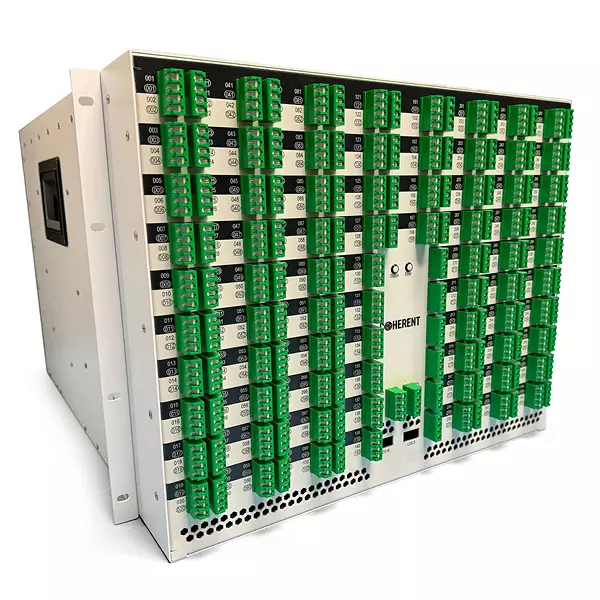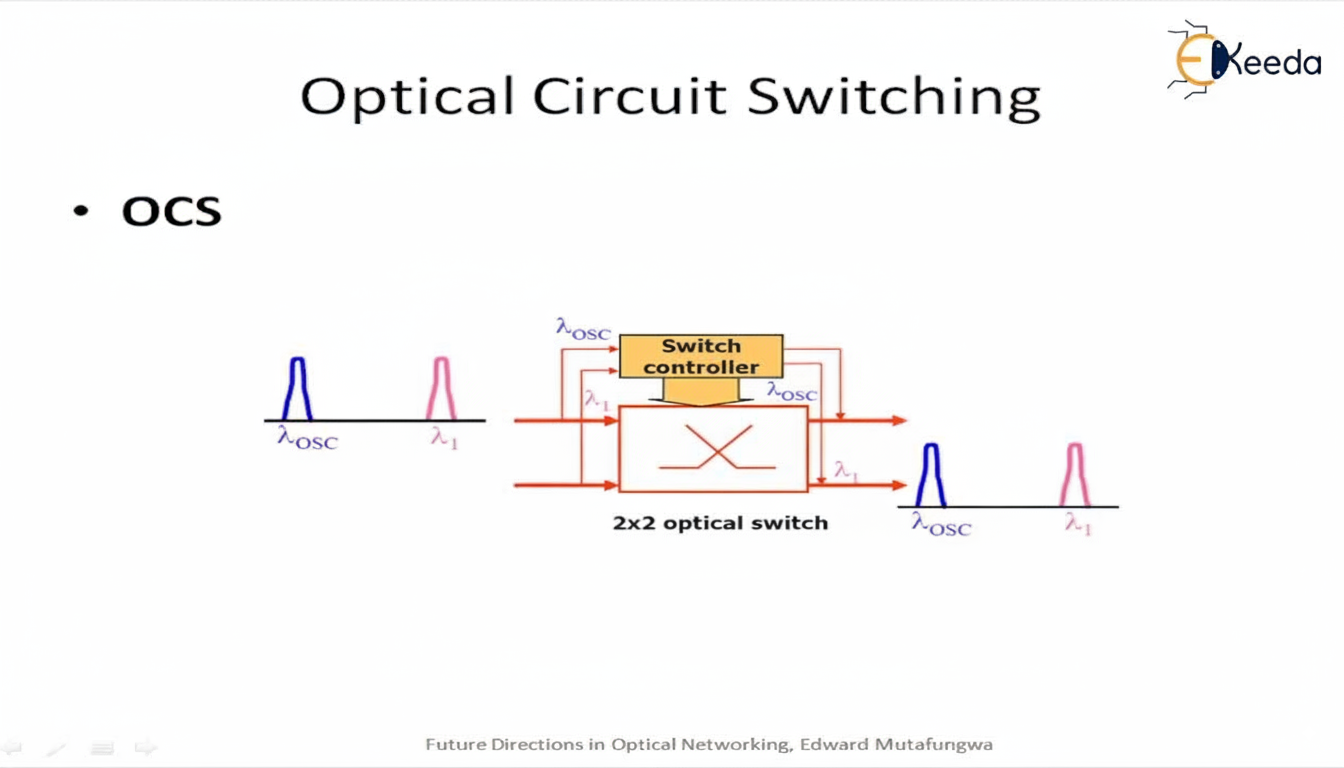Optical Circuit Switching (OCS) technology represents the strategic evolution of optical networks from traditional “connection” functions to intelligent “switching” functions, serving as a key path to solving the bandwidth bottlenecks and power consumption issues of traditional electrical switching, and is becoming a new battlefield where optical vendors are competing to deploy.
OCS (Optical Circuit Switch) is an all-optical switching technology designed to establish and manage optical paths between nodes in optical networks. Unlike traditional switches that rely on optical–electrical–optical (OEO) conversions, OCS achieves routing by physically reflecting or redirecting optical signals, enabling direct processing in the optical domain.
At its core, OCS directly switches optical signals between fiber ports by reconstructing the physical transmission path. This creates a dedicated, end-to-end optical circuit between any input and output port, forming an optical switching matrix. The entire process eliminates the need for OEO conversion typically required in conventional switches.

Direct optical path switching: Optical signals entering the switch are not converted into electrical signals; instead, they are forwarded through mechanisms such as wavelength-division multiplexing (WDM) and cross-connections.
Simplified design: The optical–electrical conversion is deferred to the server side, reducing complexity within the switching device itself.
Lower cost and power consumption: Combined with a 3D ring-based network topology, OCS effectively reduces communication hardware expenses and energy usage compared with traditional electronic switching solutions.
As a fully optical switching technology, OCS offers several key advantages:
Low latency and reduced network cost: By performing switching directly in the optical domain and avoiding optical–electrical–optical (OEO) conversions, OCS minimizes transmission latency and reduces overall network expenses.
Low power consumption and hardware cost: Without OEO conversion inside the switch, OCS significantly lowers power usage and reduces the reliance on optical modules, cutting hardware investment.
Low insertion loss with high-bandwidth transmission: OCS supports high-speed signal transmission with minimal insertion loss, ensuring high performance and stability.
Reconfigurable routing and flexibility: It enables dynamic selection of communication paths, allowing the network to adapt efficiently to diverse workloads.
Compatibility and reusability: OCS is fully transparent to data format, protocol, and transmission rate, enabling interconnection of TPU/GPU nodes with different speeds in the same network. It supports incremental deployment and heterogeneous hardware, with switch hardware that can be reused across generations.
Cluster-friendly deployment: With architectures such as 3D ring topologies, OCS simplifies large-scale AI and HPC cluster design and deployment.
Optical switching has multiple implementation technologies, mainly including the following types:
MEMS technology is a widely applied technology in OCS switches. It etches micro-mirror arrays on silicon wafers to alter the propagation direction of the input light beam, routing it to the specified output port. MEMS has relatively low cost, enables high-precision optical path control, and offers high reliability and stability, meeting the data center’s demands for high-speed and stable data transmission.
The working principle of DLC technology is to utilize an external electric field to change the refractive index of the liquid crystal material, thereby achieving precise control over the optical path direction. DLC technology only requires extremely low driving voltage (below 10V) to switch its liquid crystal units, which can ensure the reliability of OCS operation, and is suitable for communication scenarios with high reliability requirements, such as submarine networks.
DBS technology utilizes the electromechanical coupling effect of piezoelectric ceramics to drive the displacement and angular tilt of the collimator, enabling the corresponding ports of the two arrays to match and align, completing the channel connection and realizing the optical switching function. DBS technology has relatively high cost, but low power consumption, and is expected to play an important role in future high-speed communication scenarios.
Emerging technology, led by iPronics, based on silicon-based integrated optical waveguides to route optical signals, suitable for high-density integration applications. Currently, the implementation of OCS technology mainly focuses on scale-out networks using MEMS-based optical switches. The next-generation implementation is shifting towards silicon-based optoelectronic OCS systems, which have the potential for higher integration density and can simultaneously meet the network demands of scale-up and scale-out.

The rise of OCS is expected to reshape the landscape of the optical transceiver industry. On one hand, by enabling dynamic reconfiguration of fiber paths, OCS may reduce the demand for point-to-point links and accelerate market concentration, posing challenges for vendors that rely heavily on low-speed or entry-level products.
On the other hand, OCS deployment imposes stricter requirements on transceiver performance, driving the industry toward higher data rates, lower insertion loss, and silicon photonics integration. In particular, the growing demand for 400G, 800G, and even 1.6T modules in AI and HPC clusters presents significant opportunities for leading vendors.
As a result, rather than diminishing, the optical transceiver industry is entering a new phase—shifting from quantity-driven growth to performance-driven innovation.
In conclusion, Optical Circuit Switching (OCS) represents a key step toward all-optical networks, breaking through the limitations of traditional switching in power and bandwidth. Rather than competing, OCS and optical transceivers form a complementary ecosystem. As AI and data center demands for higher bandwidth and lower latency continue to rise, OCS and transceivers will jointly drive the evolution toward more efficient and powerful network architectures.